False Canopies On Fighters Work, One Almost Killed Me
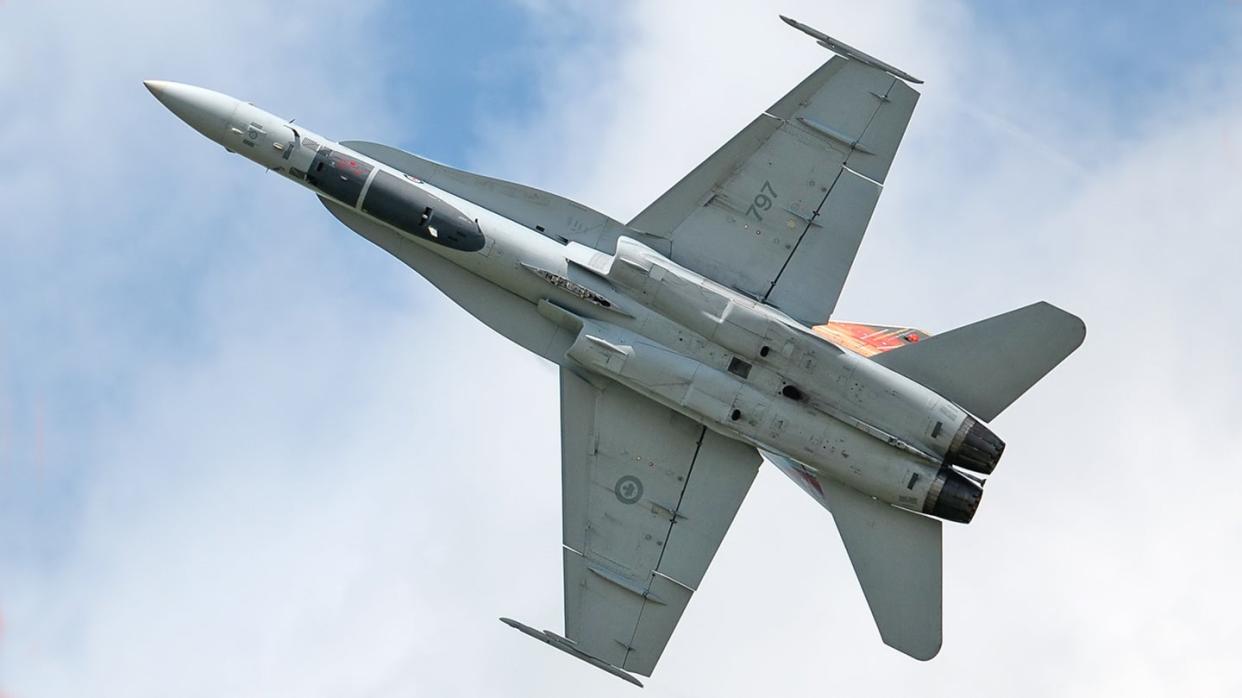
Close aerial combat is a game of fractions of a second, quick decision-making, and squeezing every ounce of performance out of fighter aircraft. Perceive. Analyze. Decide. React. Variations of this chain of events are taught at all stages of a fighter pilot’s career.
Some air forces have painted ‘false canopies’ on the bottoms of their combat aircraft in an attempt to confuse adversaries. Debate rages about the effectiveness of such attempts to mislead. I can tell you unequivocally that it does sometimes work – and that I almost died one day as a result.
On a day like any other, I sat in a briefing for a 2v1 (two versus one) Basic Fighter Maneuvers (BFM) training flight. I was feeling pretty good – my CF-18 Hornet basic course was going well, and I had moved beyond the basics of flying the jet to learning how to fight with it. This was a solo, where I would fly as the wingman to my instructor, Mike Hoch. Another instructor was to fly as our adversary (the bandit).
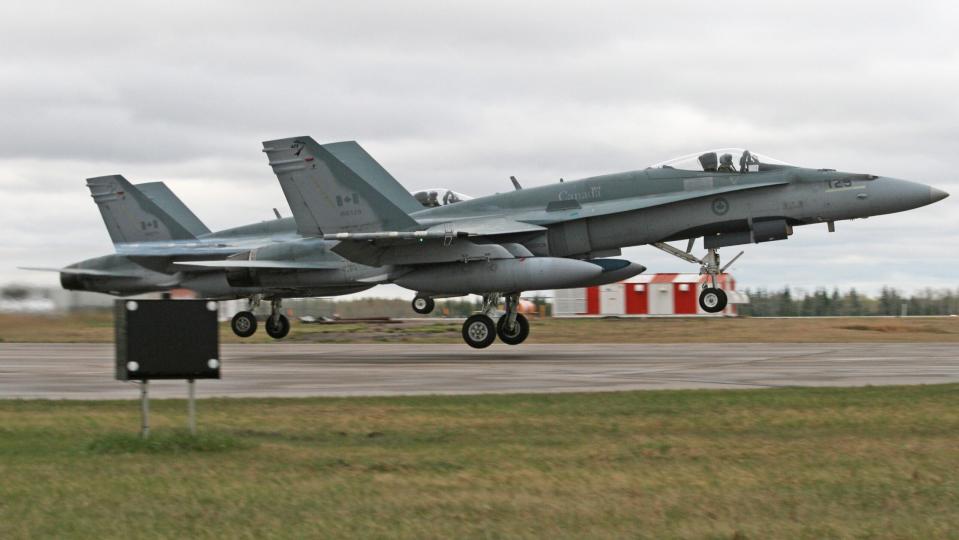
The lesson to be learned involved having one fighter engage the bad guy in close combat, while the other fighter maneuvered to get free of the fight, then turn back in and attack the bad guy from a bit further away. In close aerial combat, it was often difficult to get a shot in at the other aircraft. Both aircraft are turning very hard and doing everything to deny the adversary a valid shot, whether it was with a missile or with the gun. The fighter that was ‘free’ was usually the one who got a valid shot away first.
Since this was a ‘canned’ training scenario, the bandit sat in on the whole briefing, to make sure that we would get the most training out of every set-up. Throughout the Hornet basic course, every pound of jet fuel was spoken for, and there was little margin for making mistakes and wasting fuel. I’d been thoroughly indoctrinated in the ‘fuel is life’ school of thought, in much the same way as we saw speed as life.
There were to be some offensive set-ups, where we attacked the bandit from a position of advantage, then some defensive where he would attack from behind, and finally some neutral set-ups where we’d merge head-on. To ensure I saw both aspects, the bandit was told each time which fighter I was in. Some set-ups I was ‘engaged,’ while some I was ‘free.’
Sounds simple?
Well, it’s not.
Each fight was very dynamic, happening in three dimensions. One big change from fighting the CF-5 Freedom Fighter was that dogfighting usually involved vertical turning fights. These were egg-shaped, larger at the bottom and tighter at the top (due to gravity), and sometimes canted at an angle from the vertical toward the horizon. The main tactic was to draw the bandit into a ‘single-circle’ fight, meaning that one aircraft was chasing the other around the circle. Ideally, the friendly aircraft would be chasing the bandit, keeping him predictable but not in immediate danger of being shot by the bandit.
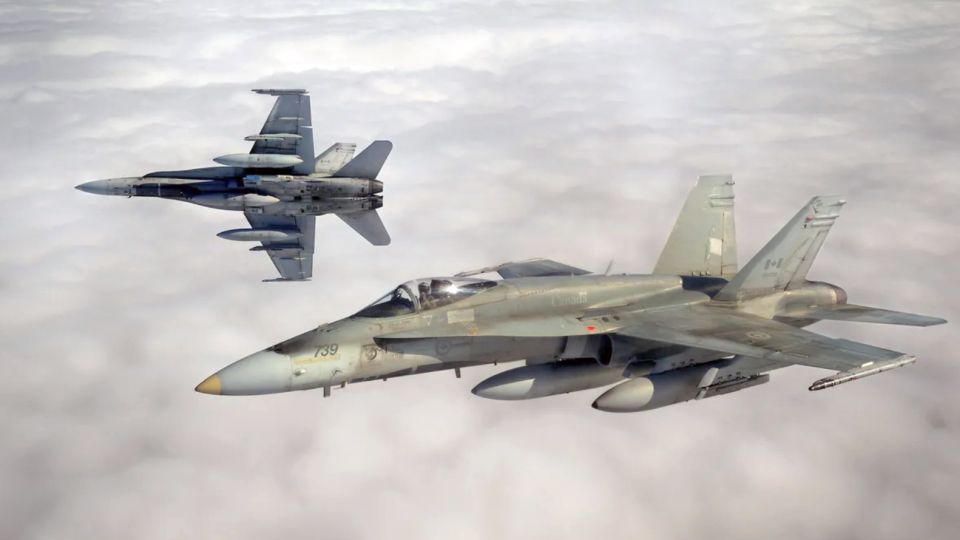
Each was doing their damnedest to shoot or avoid getting shot. The instructors thoroughly enjoyed these flights, because they could exercise their own best Basic Fighter Maneuvers (BFM), while still providing training to me, the student. One of the biggest lessons we were supposed to glean from this was the longer you got wrapped up in a turning fight, the more chance somebody from outside the fight would take a shot and kill you.
On what turned out to be the last engagement on that flight, I was getting confident. Things had gone really well so far, both as free and engaged. As was standard before each engagement, we made quick ready calls.
“Tango Two, ready with 5,000.” Fuel quantity checks and confirmations were always made in training before each engagement. In afterburner (AB), a Hornet can burn about 1,000 pounds of fuel each minute. From where we were flying, about 50 miles north of Cold Lake, Alberta, we needed to stop fighting when we had 3,500 lbs remaining, so we could make it back to base with the minimum of 2,000 lbs remaining. I made a mental note that I had at most one and a half minutes of fuel in AB before I had to stop (knock it off). In training, unlike real combat, when we reached certain fuel remaining, we stopped fighting and went home, no questions asked.
My instructor and I flew a side-by-side formation, separated by about 2 miles. We met the bandit head-on, and he immediately got engaged with my lead. My job was to fly away from the fight, out of their ‘plane of motion’ (the circle they were turning in), then come back, figure out who was who, and shoot the bad guy. Things were complicated by the fact that we were all flying the same type of aircraft, and there was no way to tell which was which visually.
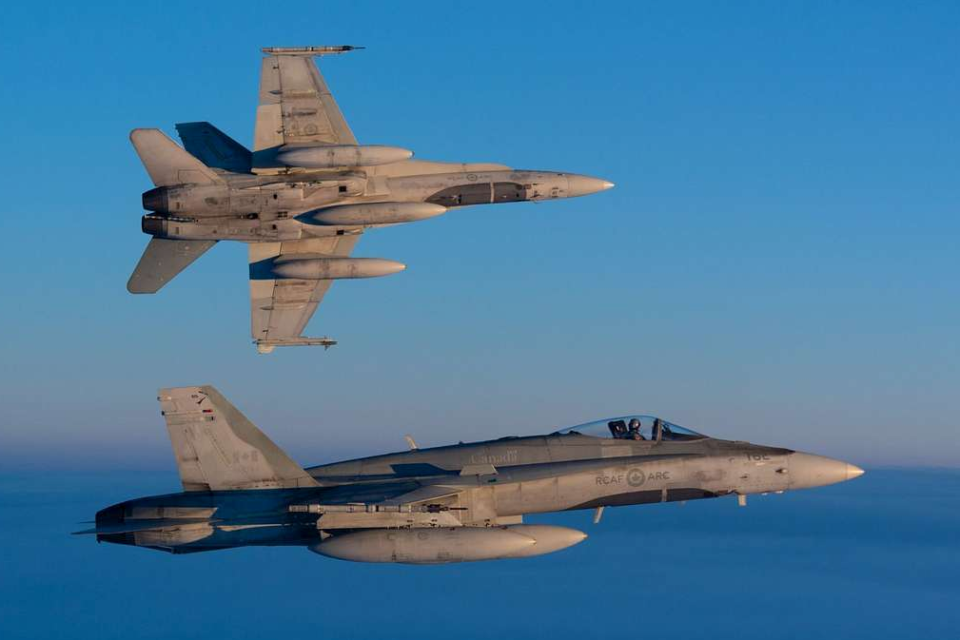
I pulled up and away from their turning fight, selecting AB, and climbed as I accelerated. Glancing over my shoulder, I could see a tight turning fight developing. My instructor gave me short, concise radio calls, effectively a play-by-play of the fight, so that when I came back to shoot I’d quickly identify and shoot the bandit.
“I’m defensive. Nose high. Bandit is low man.” All calls that told me which he’d be when I turned back and had a clear view of the fight. They looked about the right distance behind me (about three miles). Time to go shoot the bandit and save my lead’s butt. I quickly did a ‘split s’ (flipped onto my back and pulled the nose down to loop back toward them).
I craned my neck, looking way back in my bubble canopy, to spot the other two Hornets. By now I was so used to pulling six or seven Gs that I barely felt any discomfort. I was completely focused on what I needed to do, and not thinking about minor things like physical pain as I was crushed into my ejection seat in the turn. The other fighters were just visible, albeit as two tiny specks high up in my canopy and behind. I made a small adjustment in the angle of my wings to put my ‘lift vector’ (an imaginary arrow coming up out of my canopy) on them. As the distance closed slightly between us, I could just pick up what I thought was a false canopy on the belly of one Hornet.
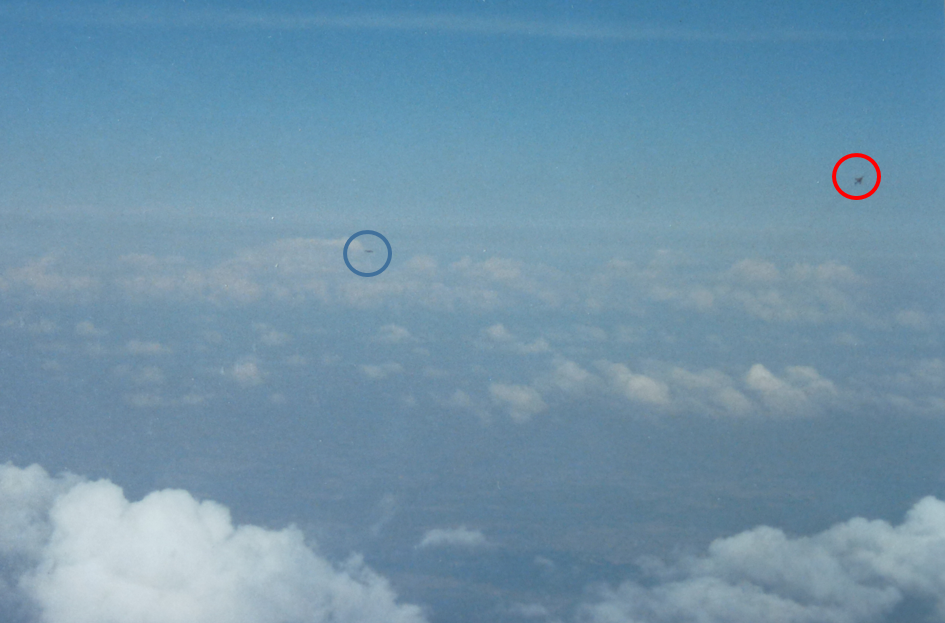
Okay. They’re turning away from me, and I’m coming around behind them. Sweet. From the latest radio calls, I knew that my lead was the one in front, so I continued pulling hard to point at the bandit. With my left thumb, I toggled the radar into boresight acquisition mode, meaning that it would lock on whatever I pointed at, then selected AIM-9M missile mode with the weapons select switch on the stick. All of these actions were done by reflex without looking inside – the Hands-On Throttle and Stick (HOTAS) being very well designed for air fighting while keeping my eyes out of the cockpit.
Satisfied that the geometry would work, I thought about my fuel quantity. I’d been burning jet fuel at a huge rate for a while now, and I wanted to make sure I was okay. The fuel gauge was down by my left knee on the instrument panel, so I flicked my eyes briefly down into the cockpit while keeping my head canted back. Moving my head under that G load would have seriously hurt my neck muscles.
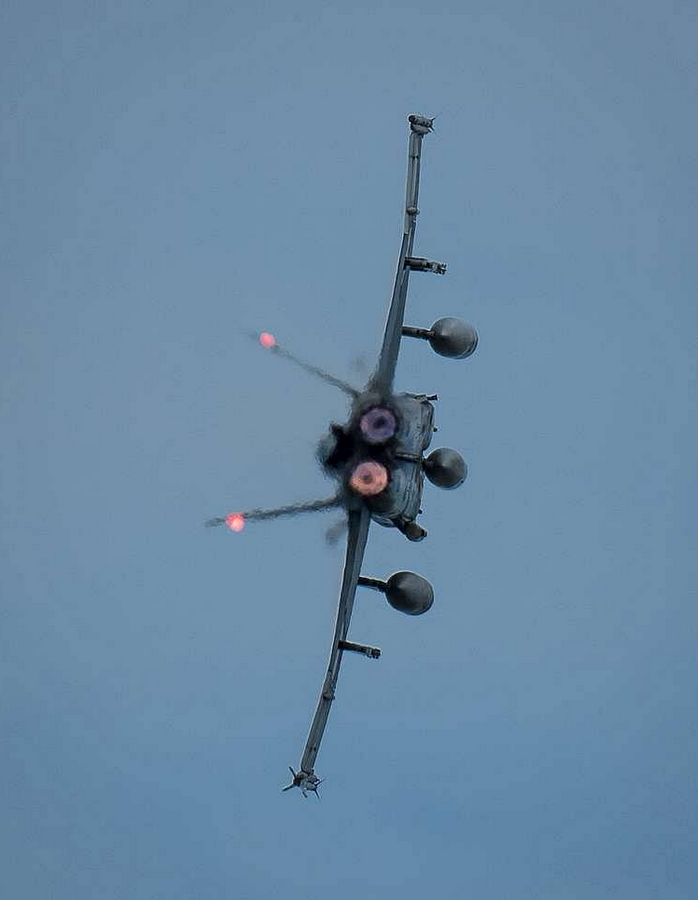
There. 4,000 lbs. Satisfied with my fuel quantity, I let my eyes flit back up, expecting to see the tails of the two aircraft turning away. I was momentarily confused as I saw in my Head-Up Display (HUD) that my radar had indeed locked onto the bandit, but instead of showing an expected valid shot, it displayed a ‘break X’ – meaning he was too close to shoot.
While my mind struggled to process the HUD’s symbology, I was shocked to see my lead flash by me, opposite direction, very, very close. Instinctively, I slacked off my turn and snapped my head to the left to watch him go by. My ‘spidey senses’ tingled, too late.
Like a spectator at a tennis match, my head snapped back to the right, just in time to see the trailing aircraft (the bandit) go by, even closer than my lead had. My aircraft rocked violently in the wake turbulence behind his hard-turning jet as he passed me.
“Knock it off, knock it off” came a terse radio transmission from my lead. I responded “Two, knock it off” and the other aircraft said “Bandit, knock it off.” A brief pause, and my lead said “Let’s call it a day. Two, rejoin echelon left, Bandit, you’re cleared off for RTB (return to base).” Shakily, I turned back toward my lead and rejoined on him..
We flew back to base in silence.
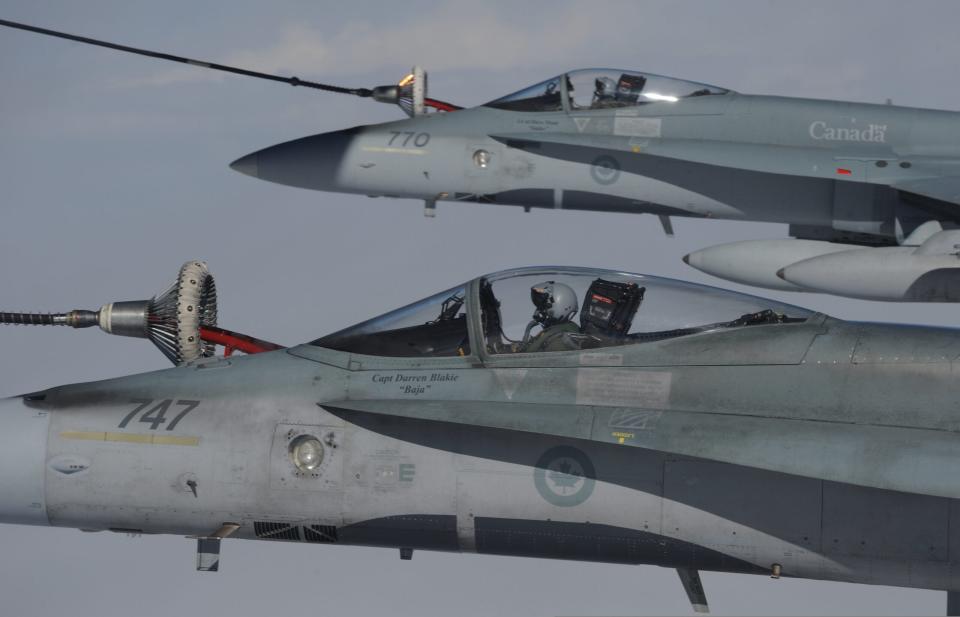
Normally I would have enjoyed the simple pleasure of flying close formation on the brand-new grey jet, revelling in the responsiveness of my powerful F-404 engines, and enjoying the spectacular view of the snow-covered Alberta wilderness. Today, though, I was immersed in my thoughts, and went through the motions of landing and unstrapping. The groundcrew who took over my jet must have found me to be uncharacteristically moody.
I looked at my instructor when I joined him at the servicing desk. Clearly, he was not ready to talk, especially in a crowded room with maintenance personnel everywhere. Nothing was said as we signed in our aircraft and we walked over to the Air Combat Manoeuvring Range/Instrumentation (ACMR/I) building together, in silence. Our aircraft had internal telemetry pods installed inside the gun door (forward left fuselage), which passed precise location and flight data down to ground receivers and recording systems back at base. By the time we got to the ACMR/I debrief room, the contractor who ran the system had it all set up to play back. There were large screens on which our aircraft were represented as simple 3D drawings.The flight data included distances between aircraft were constantly displayed and updated.
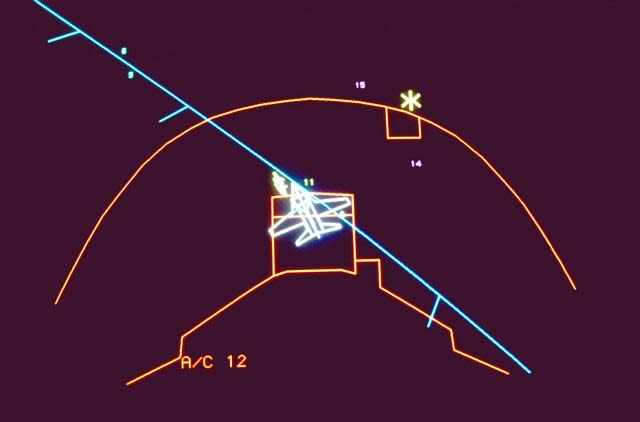
It was possible to view the recorded engagements from any angle – top/down, side, oblique, and even to see the view from inside any of the cockpits, all presented in wire frame fashion. I had seen this system being used with F-15s training at Luke AFB in Phoenix Arizona in 1981, courtesy of Major Dave Bashow, a CF-104 Starfighter pilot on exchange with the USAF. Seeing a debrief on ACMR/I was still quite impressive in 1986. Today, however, the cool factor was lost on me. I was still trying to process having nearly collided and died less than an hour ago.
In the Cold Lake debriefing room, the two instructors looked at each other, as if a silent question were being asked. The bandit nodded and Mike Hoch said “Let’s start with playback of the last engagement.” Shortly, we saw the single-circle fight develop, with my aircraft ‘spitting out’ to the west, then turning back toward them. That’s when I finally understood what had happened. When I turned back in toward them, they were not turning away from me – they were turning toward me.
Mike said “Run it back about 20 seconds. Switch to cockpit view from number Two (my aircraft).” The operator complied and soon we were seeing the view out of my cockpit, as I pulled back hard toward them. From my cockpit, the wire frame aircraft (about three miles away) could be seen turning, but the direction of turn was not evident since they were far away, and tiny.
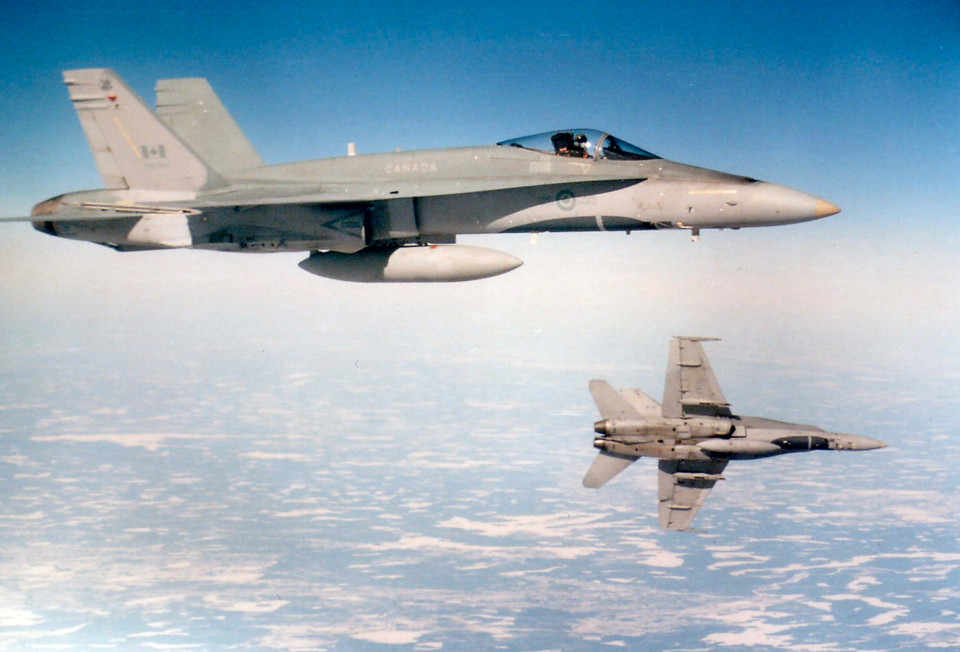
I remembered how I had looked way back above my head to spot them, then glanced inside to check the fuel quantity. As my cockpit view was played back in real time, I saw how quickly the two other aircraft approached, and could see exactly how my glance inside came at a crucial time when I failed to recognize they were approaching, and not turning away.
How did I get fooled? I had seen the real canopies, but thought they were the false ones. As I turned toward them, I had failed to notice that their turn was taking them closer to me than I ever imagined.
“Freeze!” said Mike. “Let’s see how close we came.” After playing back in slow motion, and seeing both near-collisions, we figured out that I had missed my lead by 400 feet, head-on, and came within 150 feet of the bandit who was trailing. Our closing speed was about 900 kts, or roughly 1,700 kph. Imagine trying to fly within 150 feet of another aircraft, head-on, while travelling at such speeds!
Clearly, the false canopy fooled me. In other engagements over several years similar false canopy illusions were evident, but I was now more aware of how tricky they could be. Yes, in some cases opponents gained a slight advantage due to my hesitation, but at least I didn’t come close to a mid-air collision again. Flying against other allied fighters, we sometimes heard them express how our false canopies had fooled them. For sure, a false canopy cannot help against a missile or gunfire, but it was another tool in our arsenal when we needed it the most – close combat.
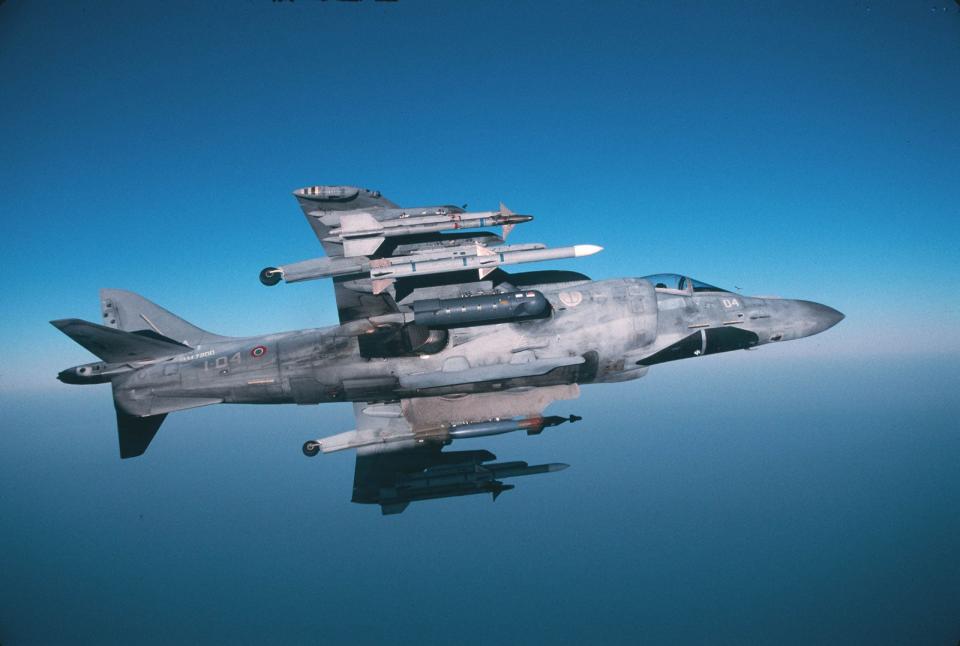
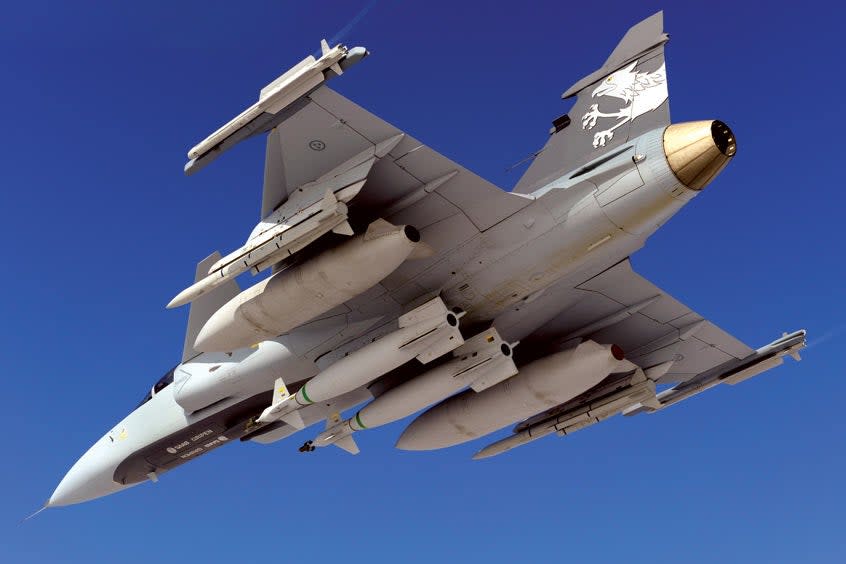
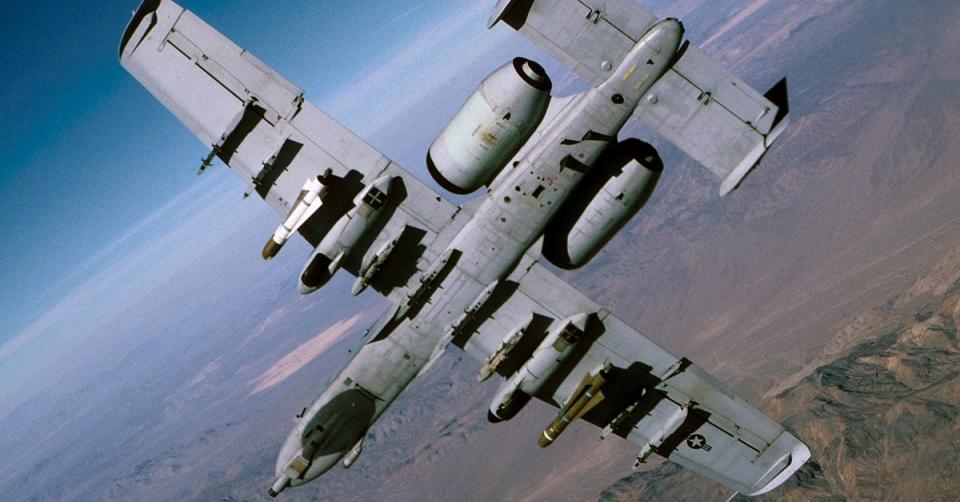
I didn’t fail that training mission, but we did have a good discussion about how to avoid such a situation in future. The debrief continued over a beer or three. All three of us realized that we’d been extremely lucky that day. I also learned that even in training, death can kick down your door without warning.
It is often said that when a fighter pilot walks out to his aircraft, he may never know that today will be his last flight. I learned first hand how real that was with the help of the most basic of optical countermeasures.
Retired Major Dan McWilliams logged 3,200 hours over 20 years in the Canadian Air Force, flying the CT-114 Tutor, CF-5, T-33, and CF-18. A specialist in Electronic Warfare and software, he managed a group of engineers developing mission-critical software for the CF-18 and for CF-18 simulators. He later flew and instructed in the Challenger 604, tested full-mission simulators for military customers, managed a CF-18 mission training center, and taught at an aviation college.

Contact the editor: Tyler@thedrive.com

